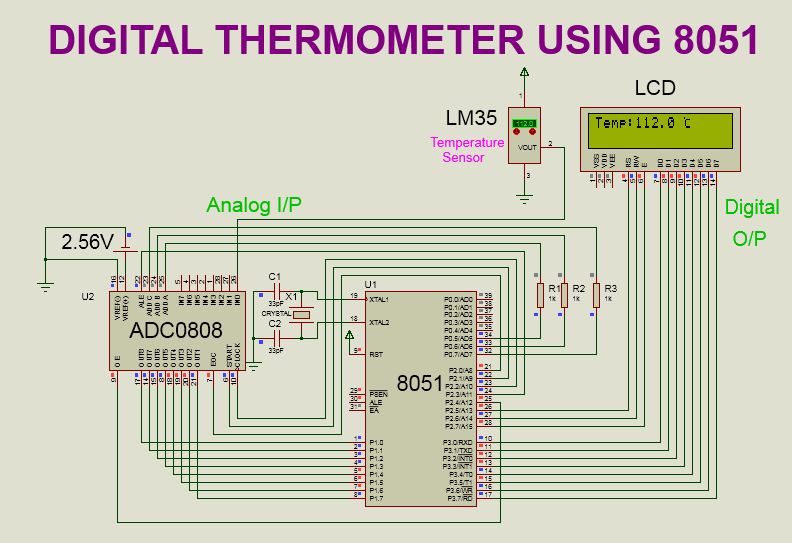Digital Thermometer using 8051 and ADC 0808 Interfacing With 8051

SOFTWARE: KEIL MICRO VISION 4 SIMULATOR: PROTEUS 8.0 CIRCUIT DIAGRAM: WORKING: Here,Temperature is taken from LM35 temperature sensor.LM35 converts surrounding temperature into analog voltage(equivalent to temperature).This analog voltage is provided to ADC0808 for digital conversion. After digital conversion,final temperature get displayed on LCD display. LCD(16X2) DISPLAY: RS,RW,EN pins are connected to P2.5 to P2.7 of 8051 respectively. Data pins (D0 to D7) are connected to P3.0 to P3.7 of 8051 respectively. LM35 SENSOR: VCC pin is connected to 5 v supply. VOUT pin is connected to IN0 channel of ADC 0808. On the VOUT pin we get equivalent voltage with respect to the surrounding temperature. Temperature change is 10 mv/°c. GND pin is connected to GND. ADC 0808: VCC pin is connected to 5 v supply. VREF(+) pin is connected to 2.56V supply. VREF(-) pin is connected to GND. OUT8(LSB) to OUT1(MSB) pins are connected to P1.0(LSB) to P1.7(MSB) respectively.i.e. OUT8 pin is connect...

